#sennacherib
Photo

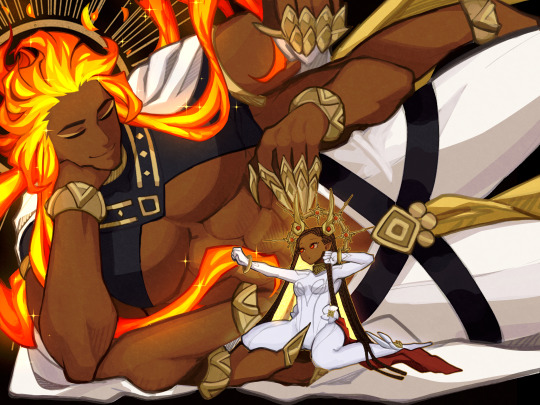
When you decide to keep and cherish the daughter you were supposed to destroy once she was no longer of use
#adramelekh#sennacherib#sol invictus#not to spoil but this will never happen#original characters#original character#OCs#OC#OC's
624 notes
·
View notes
Text
Finding the elusive Hanging Gardens of Babylon has preoccupied researchers for centuries. But one Oxford University academic claims to have placed them —and the location might surprise you!
#hanging gardens#Babylon#Nineveh#Assyrians#Iraq#Babylonians#Sennacherib#Mesopotamian Temples & Monuments#seven wonders#ancient#history#ancient origins
27 notes
·
View notes
Text
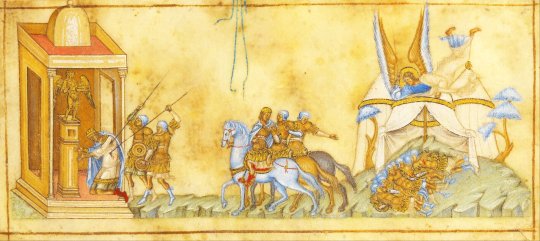
The Assyrians Invade Judah
1 During Hezekiah’s fourteenth year as king, Sennacherib king of Assyria attacked all the strong, walled cities of Judah and captured them. 2 The king of Assyria sent out his field commander with a large army from Lachish to King Hezekiah in Jerusalem. When the commander came near the waterway from the upper pool on the road where people do their laundry, he stopped. 3 Eliakim, Shebna, and Joah went out to meet him. Eliakim son of Hilkiah was the palace manager, Shebna was the royal secretary, and Joah son of Asaph was the recorder.
4 The field commander said to them, “Tell Hezekiah this:
“‘The great king, the king of Assyria, says: What can you trust in now? 5 You say you have battle plans and power for war, but your words mean nothing. Whom are you trusting for help so that you turn against me? 6 Look, you are depending on Egypt to help you, but Egypt is like a splintered walking stick. If you lean on it for help, it will stab your hand and hurt you. The king of Egypt will hurt all those who depend on him. 7 You might say, “We are depending on the Lord our God,” but Hezekiah destroyed the Lord’s altars and the places of worship. Hezekiah told Judah and Jerusalem, “You must worship only at this one altar.”
8 “‘Now make an agreement with my master, the king of Assyria: I will give you two thousand horses if you can find enough men to ride them. 9 You cannot defeat one of my master’s least important officers, so why do you depend on Egypt to give you chariots and horsemen? 10 I have not come to attack and destroy this country without an order from the Lord. The Lord himself told me to come to this country and destroy it.’”
11 Then Eliakim, Shebna, and Joah said to the field commander, “Please speak to us in the Aramaic language. We understand it. Don’t speak to us in Hebrew, because the people on the city wall can hear you.”
12 But the commander said, “My master did not send me to tell these things only to you and your king. He sent me to speak also to those people sitting on the wall who will have to eat their own dung and drink their own urine like you.”
13 Then the commander stood and shouted loudly in the Hebrew language, “Listen to what the great king, the king of Assyria says, 14 The king says you should not let Hezekiah fool you, because he can’t save you. 15 Don’t let Hezekiah talk you into trusting the Lord by saying, ‘The Lord will surely save us. This city won’t be handed over to the king of Assyria.’
16 “Don’t listen to Hezekiah. The king of Assyria says, ‘Make peace with me, and come out of the city to me. Then everyone will be free to eat the fruit from his own grapevine and fig tree and to drink water from his own well. 17 After that I will come and take you to a land like your own—a land with grain and new wine, bread and vineyards.’
18 “Don’t let Hezekiah fool you, saying, ‘The Lord will save us.’ Has a god of any other nation saved his people from the power of the king of Assyria? 19 Where are the gods of Hamath and Arpad? Where are the gods of Sepharvaim? They did not save Samaria from my power. 20 Not one of all the gods of these countries has saved his people from me. Neither can the Lord save Jerusalem from my power.”
21 The people were silent. They didn’t answer the commander at all, because King Hezekiah had ordered, “Don’t answer him.”
22 Then Eliakim, Shebna, and Joah tore their clothes to show how upset they were. (Eliakim son of Hilkiah was the palace manager, Shebna was the royal secretary, and Joah son of Asaph was the recorder.) The three men went to Hezekiah and told him what the field commander had said.
— Isaiah 36 | New Century Version (NCV)
The Holy Bible, New Century Version®. Copyright © 2005 by Thomas Nelson, Inc.
Cross References: Deuteronomy 12:2; 1 Kings 4:25; 1 Kings 13:18; 1 Kings 20:23; 2 Kings 7:6; 2 Kings 17:6; 2 Kings 18:7; 2 Kings 18:11; 2 Kings 18:13; 2 Kings 18:17,18 and 19; 2 Kings 18:27; 2 Chronicles 32:15; 2 Chronicles 32:18; Ezra 4:7; Psalm 146:3; Proverbs 9:7-8; Isaiah 22:5; Isaiah 37:10-11; Jeremiah 36:24
#Assyria#Sennacherib#northern kingdom fallen#invasion#Judah#Isaiah 36#Book of Isaiah#Old Testament#NCV#New Century Version Bible#Thomas Nelson Inc.
8 notes
·
View notes
Photo

Crucifixion
Crucifixion as a punishment was practiced by several ancient cultures, but most notably adopted by the Roman Republic and later Roman Empire. Crucifixion was a method of hanging or suspending someone on the combination of vertical and horizontal poles until they died. In Christian theology and ritual, the trial and crucifixion of Jesus of Nazareth is iconic for both his physical suffering as well as the way in which his crucifixion and subsequent resurrection from the dead transformed the lives of believers.
Continue reading...
36 notes
·
View notes
Text
4 notes
·
View notes
Text
Just leaving this here.
Feel free to reblog.
#dougie rambles#political crap#sort of#news#iraq#assyria#bethnahrin#mesopotamia#archaeology#duhok#dohuk#Beth nohadra#restoration#history#Assyrian history#assyrians#Assyrian people#udine university#Sennacherib#Faida#UNESCO#world heritage#fuck Isis#erbil
1 note
·
View note
Text
Isaiah 37:20 Saved For The World To Know God
Now therefore, O Lord our God, save us from his hand, that all the kingdoms of the earth may know You are the Lord, You alone. Isaiah 37:20
As people go through struggles and difficulties, they want to be helped out of it. Some will want to know the correct path or actions to take to turn their circumstances around. Others want someone to come in and rescue them from the troubles. Nearly every…

View On WordPress
#Asking God#for God&039;s glory#free from troubles#God is God alone#Hezekiah#Isaiah 37:20#saved by God#Selfishness#Sennacherib#Troubles
0 notes
Text
What to do? Take a Lesson from King Hezekiah
I just love this interlude within the book of Isaiah. Yesterday I wrote about Chapter 36-37 where the commander of the Assyrian army come to scoff and denigrate the Israelites belief and trust in Almighty God. King Hezekiah sent for Isaiah the prophet and he gave encouraging words as God answered the insults of the Assyrian. Today as Chapter 37 continues as Sennacherib, the king of Assyria again…

View On WordPress
1 note
·
View note
Text
Isaiah 37: A Poison Pen and Powerful Prayer
Sennacherib put on the pressure with his poison pen. Hezekiah prayed desperately, and God came through powerfully.
#Isaiah37 #Sennacherib #Hezekiah
Sennacherib’s armies had all but conquered Judah. The brutal sacking of Lachish, the capture and enslavement of Judah’s citizens, and now the siege of Jerusalem brought Hezekiah and all the people to their knees in frightened desperation.
Poison Pen
Hezekiah was distraught with grief and fear and sent word to Isaiah to pray.
God’s response to prayer was immediate and specific
Isaiah said to…
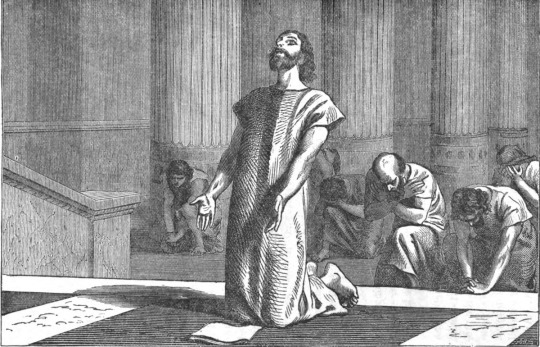
View On WordPress
0 notes
Photo

El Imperio neoasirio
El Imperio neoasirio (912-612 a.C.) fue la última etapa del Imperio asirio, que abarcaba Mesopotamia, el Levante, Egipto, Anatolia y partes de Persia y Arabia. Comenzando con el reinado de Adad Nirari II (912-891 a.C.), el imperio logró grandes expansiones territoriales que forjarían el mayor imperio del mundo hasta ese momento.
Leer más...
0 notes
Photo


Sennacherib - The Old Sun
His daughter Adramelekh
#original character#OC's#sol invictus#sennacherib#OC#literally everyone's father - too bad he can't be an actual dad to his daughter#original characters
329 notes
·
View notes
Text
From hidden histories to awe-inspiring conquests, the discovery of Sennacherib’s Prisms revealed the lost stories of a bygone era encoded in cuneiform.
#Sennacherib#inscriptions#Assyrian Empire#Assyrians#cuneiform#Mesopotamian writings#ancient#history#ancient origins
18 notes
·
View notes
Text
Ashurbanipal: the Coming King – Part II (1987)
Ashurbanipal: the Coming King - Part II
In this 2-series article (published back in 1987), I present a brief diagram of the Messianic Assyrian dynasty of the Sargonids (722-609 BCE), who ruled Nineveh as the exemplary universal empire of the World History; accepting Jonah's preaching, Sargon of Assyria (722-705 BCE) and his son and grandson, Sennacherib (705-681 BCE) and Esarhaddon (681-670 BCE), ushered the world to the Messianic Era of Ashurbanipal (669-625 BCE), who lived a first life as the Suffering Messiah, on the basis of contemporaneous historical texts and personal declarations, only to leave to posterity the claim to his exulted return and celestial reign. All posterior adaptations and identifications being fraudulent, the Second Coming of Ashurbanipal is instantly corroborated by the nature of his magnum opus. The two titles of the series are: "Ashurbanipal: the Righteous Suffering" and "Ashurbanipal: the Coming King".
Ашурбанипал: грядущий царь - Часть ΙI
В этой 2-серийной статье (опубликованной еще в 1987 г.) я представляю краткую схему мессианской ассирийской династии Саргонидов (722-609 гг. до н. э.), правивших Ниневией как образцовой универсальной империей Всемирной истории; приняв проповедь Ионы, Саргон Ассирийский (722-705 гг. до н.э.) и его сын и внук Сеннахирим (705-681 гг. до н.э.) и Асархаддон (681-670 гг. до н.э.), открыли миру мессианскую эру Ашшурбанипала (669–625 гг. до н. э.), который прожил первую жизнь как Страдающий Мессия, на основании современных ему исторических текстов и личных заявлений, только для того, чтобы оставить потомкам притязания на его ликующее возвращение и небесное правление. Все последующие адаптации и отождествления являются мошенническими, и Второе пришествие Ашшурбанипала немедленно подтверждается характером его великого произведения. Два названия сериала: «Ашурбанипал: Праведный Страдающий » и «Ашурбанипал: грядущий царь».
Ασσουρμπανιπάλ Ερχόμενος – Τμήμα Β'
Σε αυτή την σειρά δύο άρθρων (δημοσιευμένων το 1987), παρουσιάζω ένα σύντομο διάγραμμα της Μεσσιανικής Ασσυριακής δυναστείας των Σαργονιδών (722-609 πτεμ), οι οποίοι κυβέρνησαν τη Νινευή ως την υποδειγματική παγκόσμια αυτοκρατορία της Παγκόσμιας Ιστορίας. Αποδεχόμενοι το κήρυγμα του Ιωνά, ο Σαργών της Ασσυρίας (722-705 π.Χ.), καθώς και ο υιός και εγγονός του, Σεναχειρίμπ (705-681 πτεμ) και Ασσαρχαδδών (681-670 πτεμ), οδήγησαν τον κόσμο στη Μεσσιανική Εποχή του Ασουρμπανιπάλ (669-625 πτεμ), ο οποίος έζησε μια πρώτη ζωή ως ο Πάσχων Μεσσίας, με βάση τα σύγχρονα τότε ιστορικά κείμενα και τις προσωπικές του διακηρύξεις, μόνο για να αφήσει σε όλους τους επόμενους την αξίωση για την εξυμνηθείσα επιστροφή του και την ουράνια βασιλεία του. Καθώς όλες οι μεταγενέστερες προσαρμογές του θέματος και ταυτίσεις προσώπων είναι ολότελα δόλιες, η Δευτέρα Παρουσία του Ασουρμπανιπάλ επιβεβαιώνεται ακαριαία από τη φύση του μεγάλου έργου του. Οι δύο τίτλοι της σειράς είναι: «Ασσουρμπανιπάλ Πάσχων» και «Ασσουρμπανιπάλ Ερχόμενος».
-------------------------------
Main units:
Introduction
The flight of the Assyrians and of the ten tribes of Israel
The exile and the return
Ashurbanipal as the Coming King
Ashurbanipal - the Righteous Suffering
Appendices:
Assyria and Nomads
Assyrians, Medes and Urartu
in: Inexplicable, February 1987, pp. 44-54
----------------------
Основные главы:
Введение
Бегство ассирийцев и десяти колен Израилевых
Изгнание и возвращение
Ашшурбанипал как грядущий царь
Ашшурбанипал – Праведный Страдающий
Приложения:
Ассирия и кочевники
Ассирийцы, Мидийцы и Урарту
в: Необъяснимое, февраль 1987 г., стр. 44-54
--------------------------
Κυρίως ενότητες:
Εισαγωγή
Η φυγή των Ασσυρίων και των δέκα φυλών του Ισραήλ
Η μετοικεσία και η επιστροφή
Ο Ασσουρμπανιπάλ ως Ερχόμενος
Ο Ασσουρμπανιπάλ-Πάσχων
Παραρτήματα:
Ασσυρία και Νομάδες
Ασσύριοι, Μήδοι και Ουραρτού
στο Ανεξήγητο, Φεβρουάριος 1987, σ. 44-54

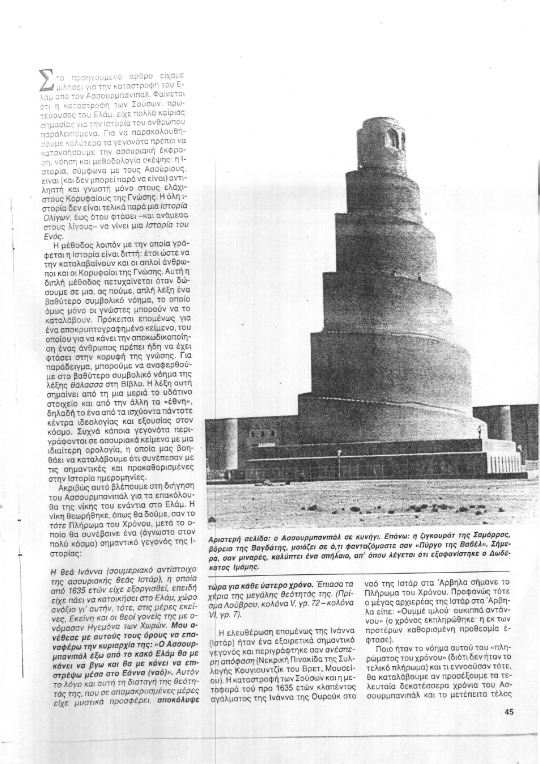

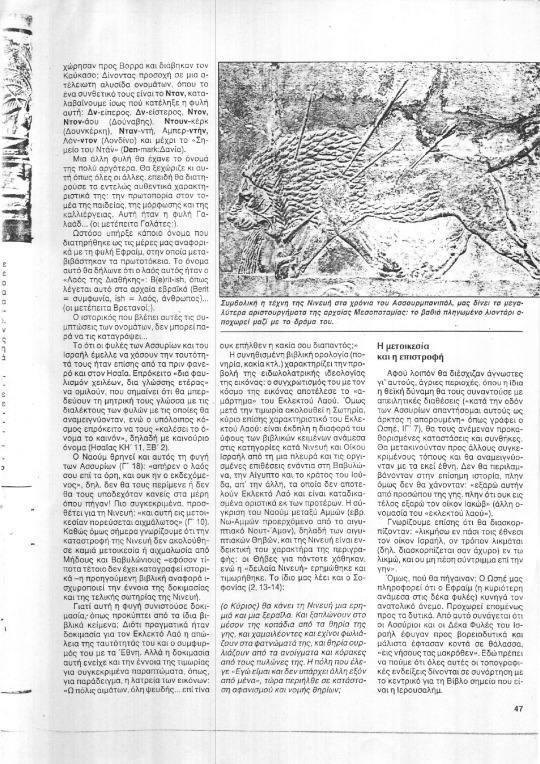







--------------------
Κατεβάστε το άρθρο: / Download the article: / Скачать статью:
issuu
#Assyria#Assurbanipal#ashurbanipal#Sargon of Assyria#Aramaeans#Ten tribes of Israel#Ancient Israel#Judah#Babylonia#Sennacherib#Esarhaddon#Ασσουρμπανπάλ#Ασσυρία#Βαβυλώνα#Μεσοποταμία#Σαργωνίδες#Σαργώνας#Σεναχειρίμπ#Δέκα φυλές του Ισραήλ#Μεσσίας
0 notes
Photo

Crucifixion
La crucifixion en tant que châtiment était pratiquée par plusieurs cultures anciennes, mais elle fut surtout adoptée par la République romaine, puis par l'Empire romain. La crucifixion était une méthode consistant à pendre ou à suspendre une personne à une combinaison de poteaux verticaux et horizontaux jusqu'à ce que mort s'ensuive. Dans la théologie et le rituel chrétiens, le procès et la crucifixion de Jésus de Nazareth sont emblématiques, tant pour sa souffrance physique que pour la manière dont sa crucifixion et sa résurrection des morts ont transformé la vie des croyants.
Lire la suite...
0 notes
Text
Mesopotamia: The Collapse of the Assyrian Empire Warfare and Collapse
Mesopotamia: The Collapse of the Assyrian Empire Warfare and Collapse
Episode 22: The Assyrian Empire, Warfare and Collapse
Ancient Mesopotamia: Life in the Cradle of Civilization
Dr Amanda H Podany
Film Review
At the time of its collapse the Assyrian empire, the largest the world had known, extended across Mesopotamia, Syria, Levant and parts of Anatolia.
Assyria became more unstable during the last century before its final collapse in 612 BC. Provincial kings…

View On WordPress
0 notes
Text
"The Assyrian came down like the wolf on the fold, / And his cohorts were gleaming in purple and gold; / And the sheen of their spears was like stars on the sea, / When the blue wave rolls nightly on deep Galilee."
Read it here | Reblog for a larger sample size!
#closed polls#polls#poetry#poems#poetry polls#poets and writing#tumblr poetry#have you read this#asks#the destruction of sennacherib#lord byron
4 notes
·
View notes